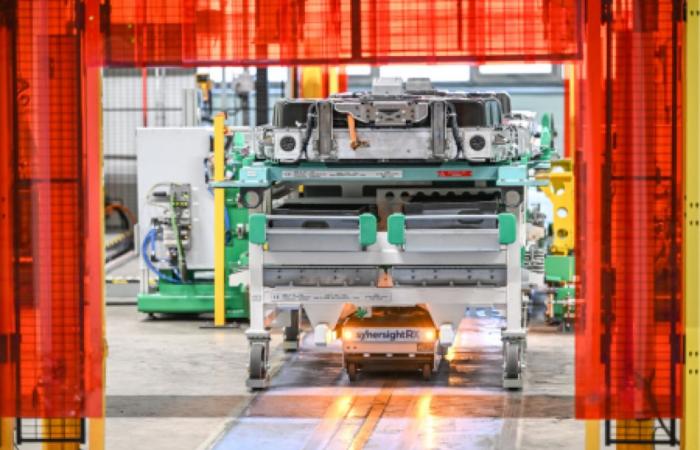If it was Gottlieb Daimler's engine which was at the origin of the rise of the petroleum gas car in Europe from 1895, it was the imagination and technical virtuosity of French manufacturers which propelled the industry French automobile at the forefront of the world industry at the beginning of the 20th century. Peugeot, Panhard and Levassor, Renault, Citroën and others developed this industry which established French technical and industrial leadership until the Second World War. This DNA has deeply marked the identity of our European industry.
If it was born aristocratic in Europe, the automobile industry will develop to become a mass product in the United States. In the 1950s, with the development of the Trente Glorieuses, Germany, Italy and the United Kingdom extended the power of European industry through a diversified offer before Japan, in the 1960s, then Korea, do not in turn become major global players.
Since the crisis of 1974, then that of 2008, the world automobile has experienced profound changes which have weakened American manufacturers, now relegated for General Motors to 4th place in the world and for Ford to 7th, and shaken the European hegemony which retains with Volkswagen, 2nd largest manufacturer in the world, and Stellantis, 6th largest manufacturer, powerful groups but subject to strong transformation pressure.
An industry in constant adaptation for a century
The European automobile industry has not remained static, it has concentrated, sought to lower its costs and develop its offering. It has been undergoing a quiet transformation for decades which has profoundly modified its geographical location, production flows and brand hierarchy. It is now divided into 4 blocks of producing countries. Table 1 shows how the 13 million vehicles (cars, light commercial vehicles, trucks, buses) produced in 2023 are distributed.
Table 1: Vehicle production by production country block in 2023
But, after the effects of Covid-19 and while those of the war in Ukraine are very present, this long history is today disrupted by an unprecedented technological and systemic transformation under the concomitant push of two forces which escape the manufacturers : the regulation imposed by the European Commission and Parliament to respond to the climate challenge, i.e. the obligation to sell zero-emission vehicles in Europe in 2035, and the turbulent dynamic created by the unexpected power of sharp Chinese competitors, pawing at the doors of Europe to respond, with competitive products, to these decarbonization objectives.
Electrification, an old idea propelled by China
The electrification of individual mobility is not a new idea, because the electric automobile was, from the outset, a known and explored solution. We must return to the analysis made by Dick Farman, in 1896, in his work on automobiles. After listing all the advantages of electric motorization, which have been reinforced thanks to electronics, he identified the main disadvantage: the absence of a very light and not too expensive energy generator. However, thanks to the dazzling progress made by liquid lithium ion technology, electric motorization has become efficient and is making great strides, both in terms of batteries, motors and vehicle architecture.
This text has held up very well in 128 years of triumph of the oil car. It is a shame that this lesson has been forgotten by European manufacturers. The conditions for building attractive and competitive electric vehicles are naturally present in Europe. But European industry, afflicted with myopia and short-termism, did not believe in a technical transformation that it had not yet mastered, and above all that it did not want, convinced that it was of the superiority of diesel technology.
Furthermore, with their apparent success in China, European manufacturers have not been able to measure the capacity, the fruit of meticulous work over more than thirty years, of the Chinese government and manufacturers to take global leadership in “the new energy cars” (NEV). In 2014, Xi Jinping declared: “Developing new energy vehicles is the only way for China to transform itself from a major automobile country into a powerful automobile hub.”
China, unlike its Asian competitors, has chosen to gain strength in its considerable domestic market before exporting high-performance vehicles to mature markets. At the end of 2023, China became the world's leading exporter ahead of Japan and Germany. Its brands, BYD, Geely, SAIC, BAIC, NIO, Leapmotor are, for the most part, still unknown to the general public, but will not remain in the shadows for long. The battery industry and the digital industry have accompanied this transformation to create a competitive ecosystem across the entire value chain on the domestic market and, since 2022, on export.
Today, nothing can stop Chinese industry as demonstrated by its instantaneous ability to react to the increase in customs duties which, moreover, is far from being a robust and lasting protection. Workarounds exist – manufacturing in CKD on European soil or in countries with trade agreements with Europe – and this burden is of no use if Europe does not take advantage of this (short) respite to build and apply action plans that meet the challenges.
For Europe, which must dispel its doubts as quickly as possible, there is no other way out than to set up a complete and competitive ecosystem. She has all the skills and must prioritize the capital to do it. The EU has started to act for the production of battery cells but must go even further and cover the entire value chain while promoting more economically and ecologically sustainable vehicles to finally reach the mass market necessary for success of this transition.
———–
Caisse des Dépôts supports, via the Research Institute, the activities of the Foundation for Political Innovation. This think tank contributes, through its studies, to the pluralism of thought and the renewal of public debate.






